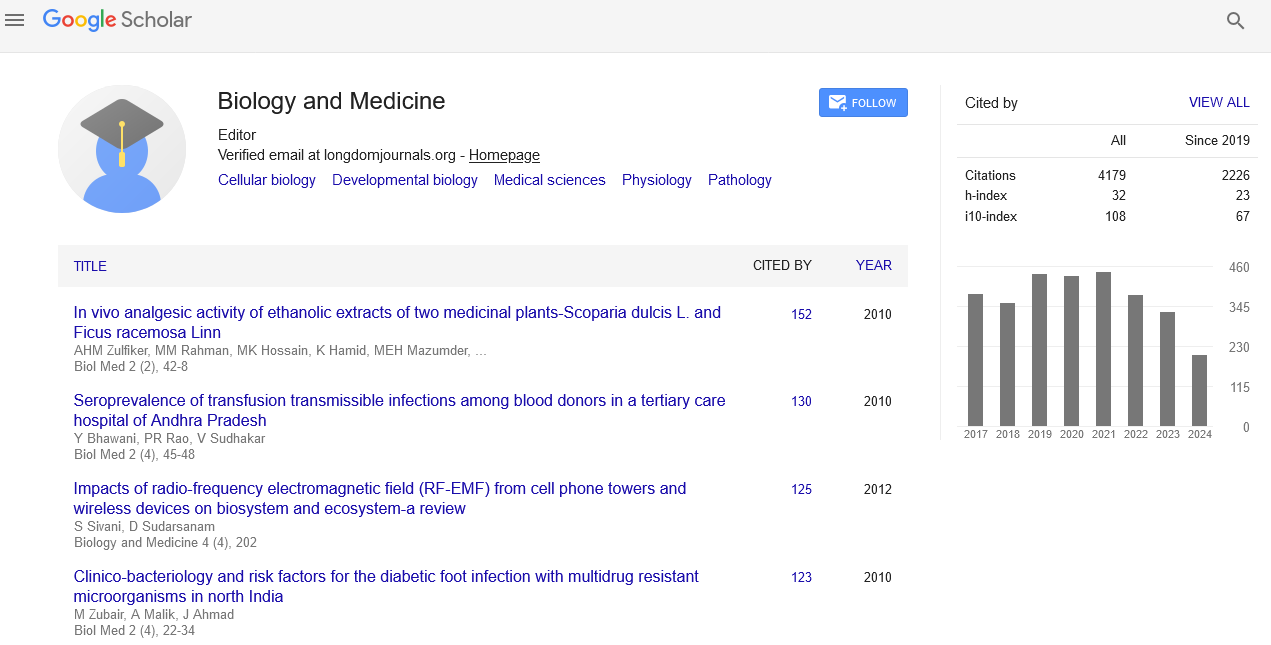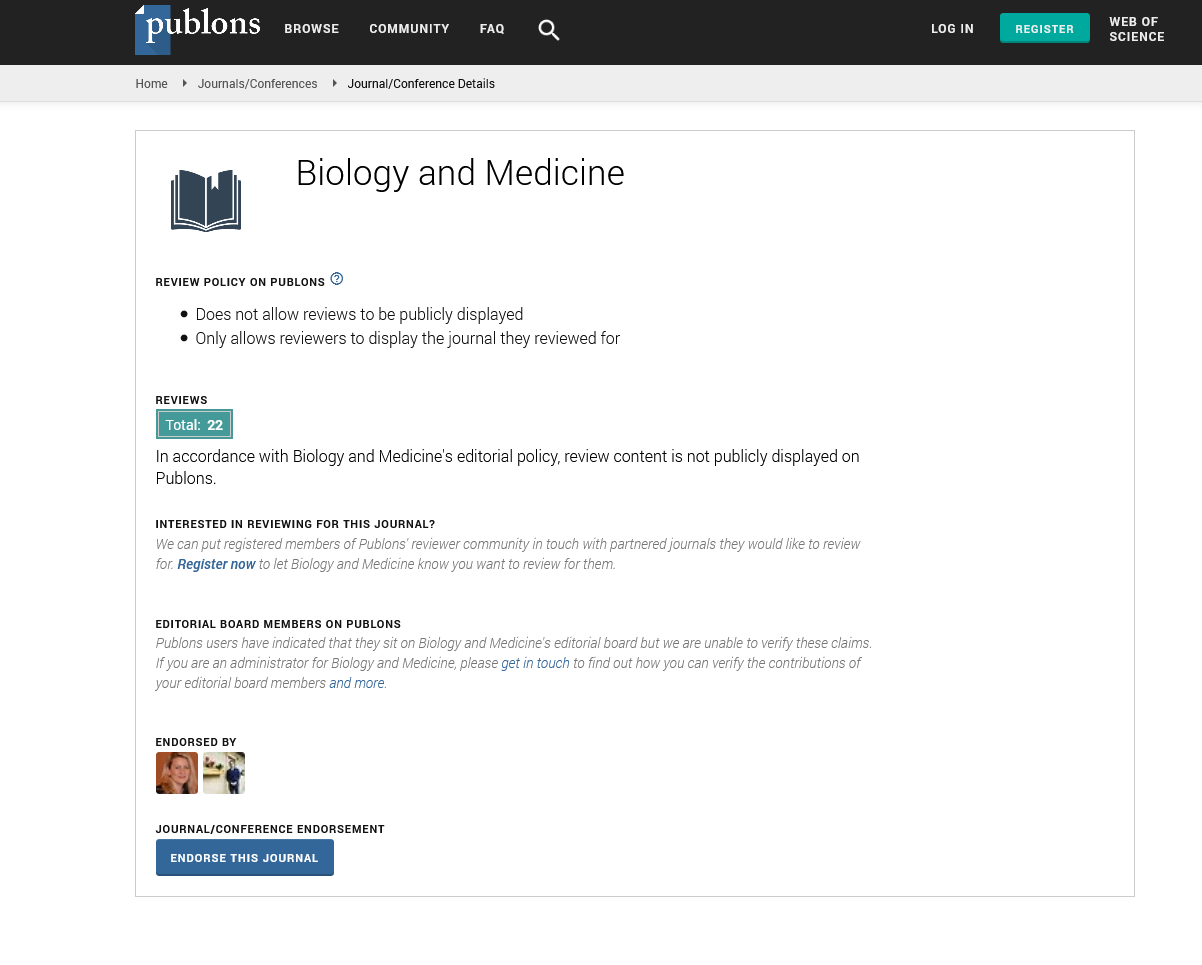Indexed In
- Open J Gate
- Genamics JournalSeek
- CiteFactor
- Cosmos IF
- Scimago
- Ulrich's Periodicals Directory
- Electronic Journals Library
- RefSeek
- Hamdard University
- EBSCO A-Z
- Directory of Abstract Indexing for Journals
- OCLC- WorldCat
- Proquest Summons
- Scholarsteer
- ROAD
- Virtual Library of Biology (vifabio)
- Publons
- Geneva Foundation for Medical Education and Research
- Google Scholar
Useful Links
Share This Page
Journal Flyer

Open Access Journals
- Agri and Aquaculture
- Biochemistry
- Bioinformatics & Systems Biology
- Business & Management
- Chemistry
- Clinical Sciences
- Engineering
- Food & Nutrition
- General Science
- Genetics & Molecular Biology
- Immunology & Microbiology
- Medical Sciences
- Neuroscience & Psychology
- Nursing & Health Care
- Pharmaceutical Sciences
Perspective - (2024) Volume 16, Issue 7
DNA Methylation Patterns as Biomarkers for Cancer Diagnosis and Prognosis
Lie Yuan*Received: 24-Jun-2024, Manuscript No. BLM-24-26731; Editor assigned: 26-Jun-2024, Pre QC No. BLM-24-26731 (PQ); Reviewed: 10-Jul-2024, QC No. BLM-24-26731; Revised: 17-Jul-2024, Manuscript No. BLM-24-26731 (R); Published: 24-Jul-2024, DOI: 10.35248/0974-8369.24.16.707
Description
DNA methylation, an epigenetic modification involving the addition of a methyl group to the cytosine base in DNA, plays a pivotal role in gene regulation and cellular differentiation. In cancer, abnormal DNA methylation patterns are a key feature of tumorigenesis and progression. These abnormalities can be used as indicators for cancer diagnosis and prediction, helping in earlier detection, personalized treatment, and better patient outcomes. DNA methylation typically occurs at cytosine residues in CpG dinucleotides, where the addition of a methyl group to the 5th carbon of the cytosine base can influence gene expression. In normal cells, DNA methylation is essential for regulating gene expression, maintaining genome stability, and silencing repetitive elements. However, in cancer cells, this process becomes dysregulated. Two primary types of DNA methylation changes are observed in cancer: Global hypomethylation and gene-specific hypermethylation.
Global hypomethylation refers to the widespread reduction in DNA methylation across the genome. This can lead to chromosomal instability, activation of oncogenes, and increased expression of transposable elements. It contributes to the overall instability of the cancer genome and can facilitate tumor progression. Gene-specific hypermethylation typically occurs in the promoter regions of tumor suppressor genes. Methylation of these promoters can silence essential genes involved in growth regulation and apoptosis, thereby contributing to cancer development.
The unique and reproducible changes in DNA methylation patterns observed in cancer cells make them valuable as diagnostic biomarkers. The following aspects highlight the utility of DNA methylation in cancer diagnosis. DNA methylation biomarkers can be detected in various biological fluids such as blood, urine, and saliva, which facilitate non-invasive cancer detection. Methylation of the SEPT9 gene in plasma DNA is used as a diagnostic biomarker for colorectal cancer. Early detection through methylation profiling can lead to timely intervention and improved survival rates. Each cancer type exhibits a distinct methylation signature, which can be used to differentiate between cancer types and subtypes. For example, the methylation patterns of the MGMT and LINE-1 genes can help in distinguishing between gliomas and other types of brain tumors. This specificity improves diagnostic accuracy and helps in tailoring treatment strategies.
Certain DNA methylation markers have been shown to predict the cancer recurrence or progression. The methylation status of the RASSF1A gene in breast cancer can provide information on the risk of metastasis and guide follow-up strategies. Beyond diagnosis, DNA methylation patterns also hold significant potential for cancer prognosis. These biomarkers can provide insights into disease progression, treatment response and patient outcomes. DNA methylation changes often correlate with disease stage and progression. For example, increased methylation of the CDKN2A gene is associated with more advanced stages of various cancers. Methylation profiles can therefore provide valuable information about the aggressiveness of the tumor and help in staging the disease. Monitoring changes in DNA methylation can offer insights into how well a patient is responding to treatment. In some cases, treatmentinduced changes in methylation patterns can be used to evaluate the effectiveness of therapies and adjust treatment plans accordingly.
Methylation patterns have been linked to patient survival rates. For example, hypomethylation of certain genes is often associated with poor prognosis in cancers such as lung and prostate cancer. By analyzing these patterns, clinicians can better predict patient outcomes and personalize treatment plans. Biomarkers must be validated in large, diverse patient cohorts to confirm their clinical utility and accuracy. Validation studies are essential to establish the reliability of these biomarkers for routine clinical use. Integrating DNA methylation biomarkers with other diagnostic and prognostic tools, such as genomic and proteomic data, can enhance the overall accuracy and utility of cancer management strategies.Citation: Yuan L (2024). DNA Methylation Patterns as Biomarkers for Cancer Diagnosis and Prognosis. Bio Med. 16:707.
Copyright: © 2024 Yuan L. This is an open-access article distributed under the terms of the Creative Commons Attribution License, which permits unrestricted use, distribution, and reproduction in any medium, provided the original author and source are credited.


